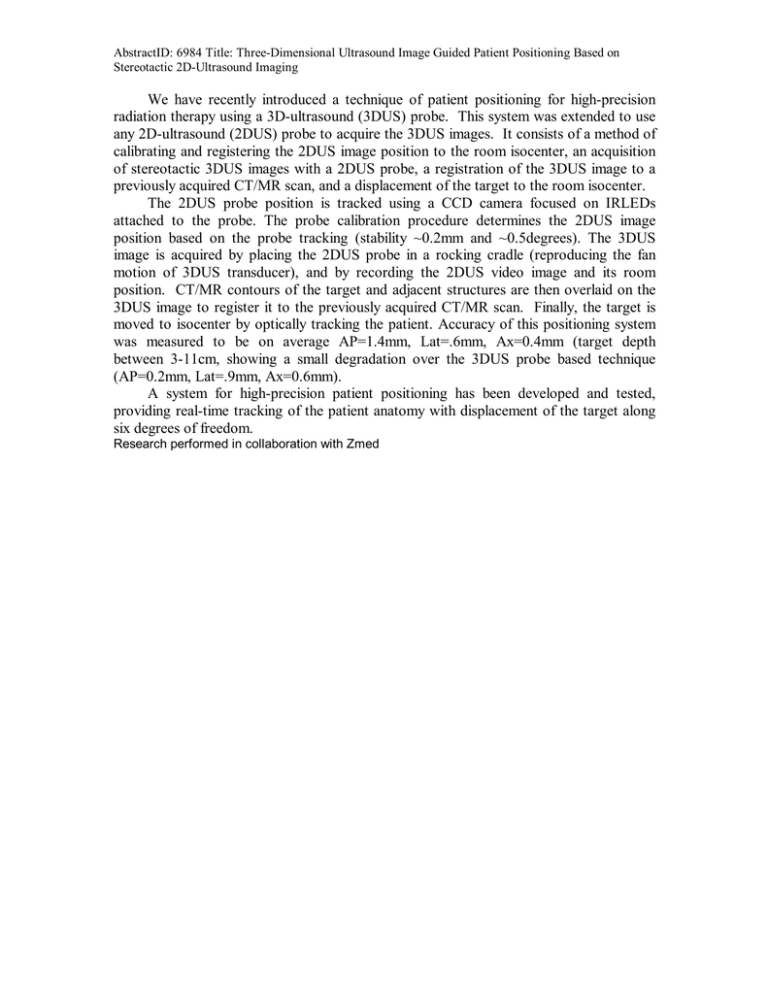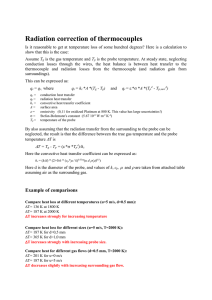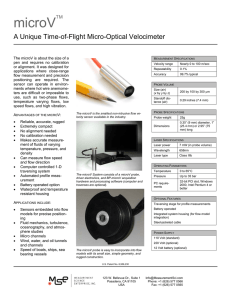AbstractID: 6984 Title: Three-Dimensional Ultrasound Image Guided Patient Positioning Based... Stereotactic 2D-Ultrasound Imaging
advertisement

AbstractID: 6984 Title: Three-Dimensional Ultrasound Image Guided Patient Positioning Based on Stereotactic 2D-Ultrasound Imaging We have recently introduced a technique of patient positioning for high-precision radiation therapy using a 3D-ultrasound (3DUS) probe. This system was extended to use any 2D-ultrasound (2DUS) probe to acquire the 3DUS images. It consists of a method of calibrating and registering the 2DUS image position to the room isocenter, an acquisition of stereotactic 3DUS images with a 2DUS probe, a registration of the 3DUS image to a previously acquired CT/MR scan, and a displacement of the target to the room isocenter. The 2DUS probe position is tracked using a CCD camera focused on IRLEDs attached to the probe. The probe calibration procedure determines the 2DUS image position based on the probe tracking (stability ~0.2mm and ~0.5degrees). The 3DUS image is acquired by placing the 2DUS probe in a rocking cradle (reproducing the fan motion of 3DUS transducer), and by recording the 2DUS video image and its room position. CT/MR contours of the target and adjacent structures are then overlaid on the 3DUS image to register it to the previously acquired CT/MR scan. Finally, the target is moved to isocenter by optically tracking the patient. Accuracy of this positioning system was measured to be on average AP=1.4mm, Lat=.6mm, Ax=0.4mm (target depth between 3-11cm, showing a small degradation over the 3DUS probe based technique (AP=0.2mm, Lat=.9mm, Ax=0.6mm). A system for high-precision patient positioning has been developed and tested, providing real-time tracking of the patient anatomy with displacement of the target along six degrees of freedom. Research performed in collaboration with Zmed




